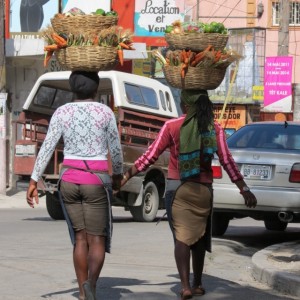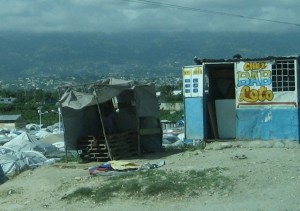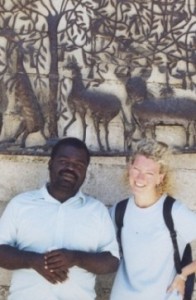State Dept. Advises Caution When Driving in Haiti
Planning a trip to Haiti is fun and exciting, but it is always a good idea to have a feel for what you are getting yourself into. Having just consulted the State Department website on Haiti, I am happy to report that the current advisories don’t offer up anything much that is new or alarming. Status quo, you might say. Maybe it is my anticipatory mood, though, that makes me think their admonishments of caution are actually kind of funny.Take for example:
“In addition to vehicles, a variety of other objects may appear on the road in Haiti, such as wooden carts dragged by people or animals, small ice cream carts, animals, mechanics working on vehicles parked on the street, and vendors and their wares.”
Ya think? Then there was this gem:
“Driving in Haiti must be undertaken with extreme caution. Traffic is usually chaotic; those with no knowledge of Haitian roads and traffic
customs should hire a driver through a local tour operator or hotel. Roads are generally unmarked and detailed and accurate maps are not widely available. Lanes are not marked and signs indicating the direction of traffic flow seldom exist. Huge potholes may cause drivers to execute unpredictable and dangerous maneuvers in heavy traffic.”
Been there, seen that! In one of the more remarkable examples of potholes burned in my brain, I am pretty sure you could have lost a four-year old for good. Roadway hazard doesn’t quite describe it accurately. Yawning bottomless chasm is much closer.
And finally:
“Signaling imminent actions is not widely practiced and not all drivers use turn indicators or international hand signals properly. For instance, many drivers use their left blinker for all actions, including right turns and stops. Non-standard and non-intuitive hand signals are used to indicate a variety of actions. Drivers do not always verify that the road is clear before switching lanes, turning, or merging. When making a left-hand turn, drivers should be aware that traffic may pass on the left while they are attempting to turn. This is legal in Haiti.”
All of which makes me thank my lucky stars that we have Franz. His skill as a driver is beyond compare and he proves it every single time we

Meet Franz, our eternally patient, extraordinarily skilled driver and friend. He is worth his weight in gold.
get in his van. Truly a he is heaven-sent; he is able to negotiate all of the above and more with infinite patience and finess. I actually think he could even make the State Department relax. Now THAT is a gift.
Contributed by Linda for It’s Cactus












